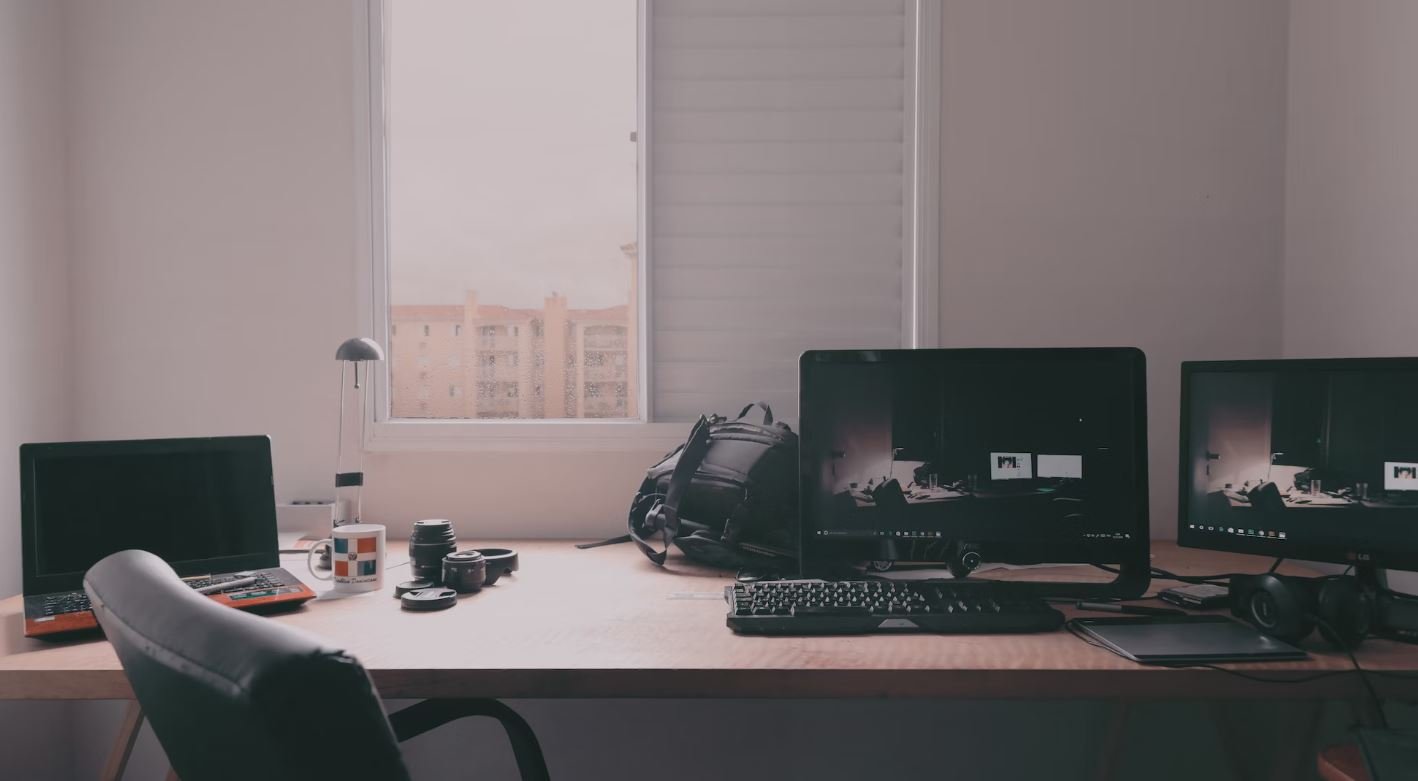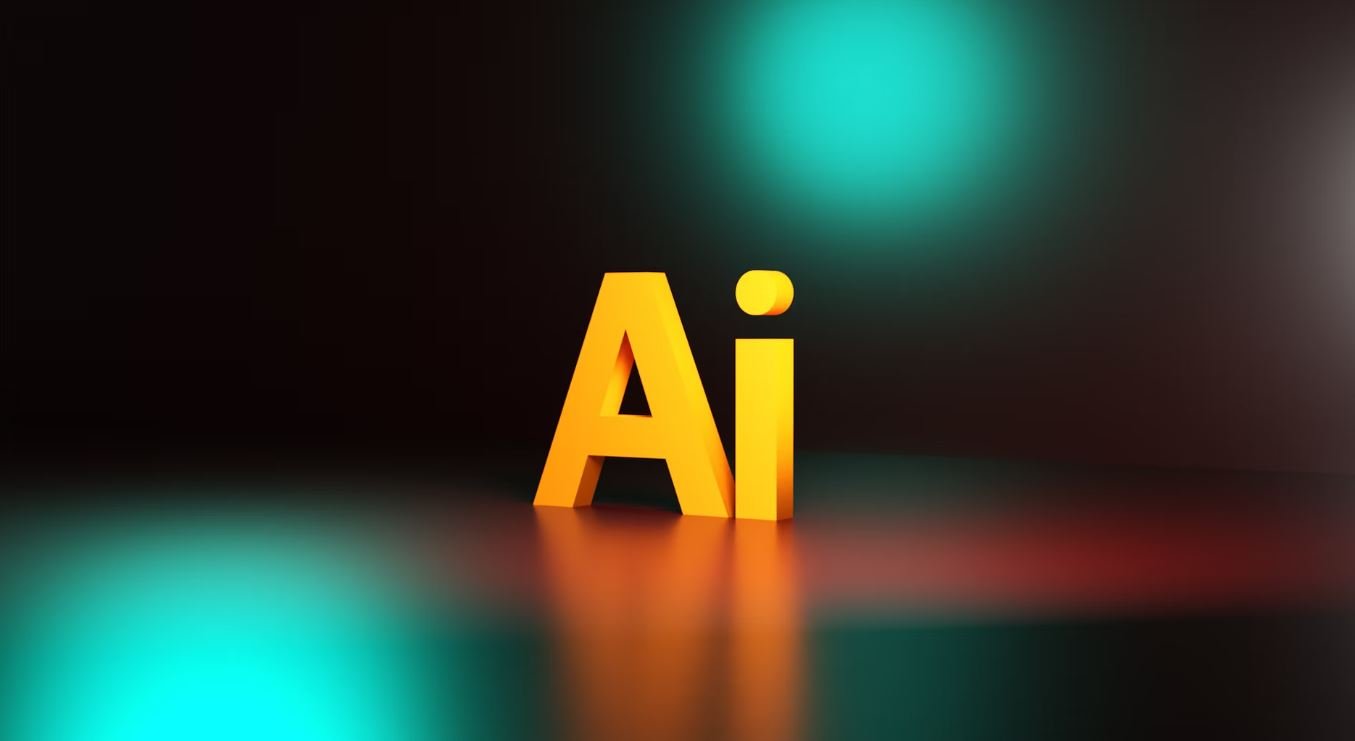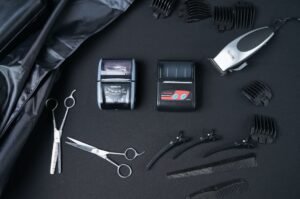Film Camera
A film camera is a type of camera that uses photographic film to capture images. While digital cameras have become the more common choice in recent years, film cameras still hold a special place for enthusiasts and professionals who appreciate the unique qualities and shooting experiences they offer.
Key Takeaways:
- Film cameras use photographic film to capture images.
- They provide a unique shooting experience and produce distinctive, nostalgic images.
- Film cameras require additional steps for processing and developing the film.
- Film cameras offer a range of formats, such as 35mm and medium format.
- Film cameras can be more affordable compared to high-end digital cameras.
Film cameras offer a unique shooting experience that many photographers find appealing. *Film cameras force photographers to slow down, carefully compose shots, and think about each frame before pressing the shutter button*. This approach can make photographers more intentional and thoughtful in their image-making process, resulting in more deliberate and often artistic photographs. Additionally, the film medium itself gives a distinct aesthetic and texture to the images, with its characteristic grain structure and color rendition.
Types of Film Cameras
There are several types of film cameras available, offering a range of formats and features. Some of the main types include:
- 35mm Cameras: These are the most common type of film cameras, using 35mm photographic film. They are portable and versatile, with a wide variety of lens options available.
- Medium Format Cameras: These cameras use larger film sizes, typically 120 or 220 roll film, resulting in higher resolution and image quality. They are often preferred by professional photographers and enthusiasts.
- Instant Cameras: Instant film cameras produce a physical print of the captured image moments after exposure. They provide a fun and immediate way to enjoy instant photography.
- Large Format Cameras: These cameras use large sheet film, usually in sizes such as 4×5 or 8×10 inches. They are commonly used in professional studios and for landscape photography.
| Advantages of Film Cameras | Disadvantages of Film Cameras |
|---|---|
| Film cameras provide a distinctive, nostalgic aesthetic. | Film and processing costs can add up in the long run. |
| Film has a wide exposure latitude, allowing for greater highlight and shadow detail. | Limited number of exposures per roll of film. |
| Film cameras can be more affordable compared to high-end digital cameras. | No instant feedback on the captured images; requires waiting for film processing. |
*Film cameras offer a level of unpredictability and serendipity that digital cameras often lack*. Since photographers don’t have instant feedback on the photos they take, they need to wait until the film is developed to see the results. This element of surprise can lead to unexpected and magical images, creating a sense of excitement and anticipation that is unique to film photography.
Film Camera vs. Digital Camera
While digital cameras have overtaken film cameras in popularity, each has its own advantages and considerations. Here are some points to compare:
| Film Camera | Digital Camera |
|---|---|
| Distinctive, nostalgic aesthetic | Instant feedback and review |
| Requires film processing | Immediate access and sharing of images |
| Deliberate and thoughtful shooting process | More options for post-processing and editing |
Despite the advantages of digital cameras, film cameras continue to attract a dedicated group of photographers, professionals, and enthusiasts who appreciate the unique qualities they offer. Whether it’s the tangible nature of film or the artistic possibilities it presents, film photography holds a special place in the photography world.

Common Misconceptions
Film Camera vs Digital Camera
One common misconception people have about film cameras is that they are outdated and obsolete compared to digital cameras. However, this is not entirely true. Film cameras offer a unique and distinct aesthetic that cannot be fully replicated by digital cameras. Additionally, many professional photographers still prefer using film cameras for certain projects. Film cameras may not have the technological advancements of digital cameras, but they still have their place in the photography world.
- Film cameras provide a distinct vintage look.
- Professional photographers often prefer film cameras for specific projects.
- Film cameras have a different workflow and can encourage a more thoughtful approach to photography.
Cost of Film and Development
Another misconception is that film photography is expensive due to the cost of film rolls and development fees. While it is true that film and development can be costly, the overall cost can be significantly reduced by shooting less frequently and learning to develop the film at home. By adopting these practices, film photography can actually be a cost-effective hobby.
- You can reduce costs by shooting less frequently.
- Learning to develop film at home can save money on development fees.
- Investing in reusable film holders can also reduce the cost of buying new rolls for each shoot.
Quality and Resolution
Many people falsely believe that digital cameras always offer better image quality and resolution compared to film cameras. However, film cameras can produce stunningly sharp and detailed images that can rival the resolution of digital cameras. The fine grain and analog nature of film contribute to its unique aesthetic, often preferred by photographers for its nostalgic and timeless feel.
- Film cameras can achieve high levels of sharpness and detail.
- The grain in film photographs adds a unique aesthetic quality that some photographers prefer.
- Film cameras can capture a wide dynamic range, resulting in rich and vibrant colors.
Availability of Film Stock
Contrary to the belief that film stock is hard to find, there are still various film stocks available in the market today. Although some films have been discontinued, new ones have emerged, offering photographers a wide range of options. Additionally, the resurgence of film photography has led to a growing interest and availability of film stock in specialized stores and online marketplaces.
- There is still a wide range of film stocks available in the market today.
- New film stocks have emerged, offering photographers different characteristics and aesthetics.
- Specialized stores and online marketplaces cater to the growing interest in film photography.

Film Photography: A Nostalgic Journey into the Past
In today’s digital age, where instant gratification is the norm, film photography offers a charmingly romantic alternative. This article explores the enduring fascination with film cameras, providing captivating insights into their popularity, renowned manufacturers, and iconic models that have shaped the photography landscape.
Timeless Beauty: Antique Film Cameras
An appreciation for antique film cameras goes beyond their functionality. These heirlooms have become sought-after collectors’ items, prized not only for their photographic capabilities but also as decorative pieces that embody the history of photography. Here we present some iconic antique film cameras and their average market value.
| Camera Model | Manufacturer | Year Produced | Average Market Value ($) |
| ————- | ————- | ————- | ———————– |
| Leica IIIc | Leitz | 1940-1950 | $1,500 – $2,500 |
| Rolleiflex 2.8F | Franke & Heidecke | 1952-1956 | $1,800 – $2,500 |
| Hasselblad 500C | Victor Hasselblad | 1957-1970 | $3,500 – $4,500 |
| Nikon F | Nikon | 1959-1973 | $1,000 – $1,500 |
| Pentax Spotmatic | Asahi Optical Co. | 1964-1976 | $400 – $600 |
Legendary Craftsmanship: Iconic Film Cameras
Throughout the history of photography, certain film cameras have achieved legendary status due to their exceptional craftsmanship, innovative features, or cultural significance. Here are some iconic film cameras that have left an indelible mark in the world of photography.
| Camera Model | Manufacturer | Notable Features |
| ————- | ————- | ———————————————-|
| Leica M3 | Leitz | First to employ combined rangefinder/viewfinder |
| Nikon F2 | Nikon | Interchangeable focusing screens |
| Canon AE-1 | Canon | First to have a microprocessor |
| Olympus OM-1 | Olympus | Compact and lightweight design |
| Pentax K1000 | Asahi Optical Co. | Fully mechanical camera |
Rolling with the Big Names: Film Camera Manufacturers
Several manufacturers have made an indelible mark on the film photography landscape due to their exquisite craftsmanship, innovation, and lasting influence. Here are some of the most reputable film camera manufacturers:
| Manufacturer | Origin | Notable Camera Models |
| —————– | ———— | ——————————- |
| Leica | Germany | Leica M3, Leica IIIc |
| Nikon | Japan | Nikon F, Nikon F2 |
| Canon | Japan | Canon AE-1, Canon F-1 |
| Hasselblad | Sweden | Hasselblad 500C, Hasselblad 503CW |
| Pentax | Japan | Pentax Spotmatic, Pentax K1000 |
Preserving the Craft: Film Camera Resurgence
Despite the digital revolution, film photography has seen a resurgence in recent years, attracting a community of passionate photographers who appreciate the artistry and tangible aspects of shooting on film. Here are some key reasons contributing to the revival of film photography:
| Reason | Brief Explanation |
| ———————— | ——————————————————————— |
| Aesthetic Appeal | Film captures rich textures, vibrant colors, and a nostalgic quality. |
| Slow Down | Shooting on film encourages patience, intent, and deliberate framing. |
| Tangible Results | The physicality of film prints holds a unique appeal for photographers. |
| Embracing Limitations | Working within film’s technical constraints fosters creative problem-solving. |
| Learning Experience | Film photography offers a hands-on education in the fundamentals. |
Analog vs. Digital: A Photographic Showdown
The age-old debate of analog vs. digital photography often leads to spirited discussions among photographers. While digital photography offers convenience and immediacy, many film enthusiasts argue that film provides a distinct character and a more authentic photographic experience. Here are some key differences between analog and digital photography:
| Aspect | Analog Photography | Digital Photography |
| ———————— | ——————————————————— | —————————————————– |
| Image Quality | Rich film grain, natural color rendition | Pixel-perfect precision, extensive post-processing |
| Workflow | Labor-intensive, developing film and making prints | Instant results, immediate social sharing |
| Cost | Film rolls and development expenses can add up over time | Equipment and software costs upfront |
| Learning Curve | Understanding exposure, film selection, and manual controls| Mastering digital settings, editing software skills |
| Flexibility | Limited shots per roll, fixed ISO per film | Unlimited shots, adjustable ISO, various file formats |
Film Photography Figures: Film Demand and Consumption
Much like vinyl records and cassette tapes, film photography has witnessed a surprising resurgence in popularity. Here are some intriguing figures that showcase the revival of film and its continued demand:
| Year | Film Sales (in millions of rolls) | Notable Film Stocks |
| ——— | ——————————— | —————————– |
| 2015 | 36.5 | Kodak Portra 400, Fujifilm Superia 200 |
| 2019 | 41.9 | Ilford HP5 Plus, Kodak Ektar 100 |
| 2020 | 47.3 | Fujifilm Provia 100F, Cinestill 800T |
| 2021 (Q1) | 12.7 | Kodak Tri-X, Lomography 400 |
| Projection | 52.5 (estimated) | Kodak Gold 200, Fujicolor C200 |
Preserving Memories: Importance of Archiving Film
While the digital era offers unparalleled convenience and accessibility, the vulnerability of digital files to degradation and loss raises concerns for long-term preservation. Archiving film, however, presents a physical and tangible solution for safeguarding memories. Here are some key advantages of archiving film:
| Advantages | Brief Explanation |
| ————————- | ——————————————————————— |
| Durability | Properly stored film negatives can last for many decades or more. |
| Physical Connection | Tangible film carries sentimental value and fosters a tactile experience. |
| Immunity to Technological Advances | Film is independent of evolving digital technologies. |
| Cultural Preservation | Archiving film contributes to preserving historical visual records. |
| Analog-to-Digital Conversion | Film archives can be digitized while ensuring their future accessibility. |
The Everlasting Magic: Film Cameras’ Enduring Appeal
Film cameras, with their intrinsic charm and artistic allure, continue to captivate the hearts of photographers and enthusiasts alike. Regardless of technological advancements, there will always be a special place for film cameras in the realm of photography. The enchanting process of shooting on film, the unique aesthetics, and the tangible results offer an experience that cannot be replicated in the digital world. As we celebrate the nostalgic beauty of film photography, it becomes clear that these iconic cameras will forever hold a cherished spot in the art of capturing moments.
Frequently Asked Questions
What is a film camera?
A film camera is a type of camera that uses photographic film to capture images. It uses a light-sensitive film that is exposed to light when the shutter is released, creating a physical image that can be developed and printed.
What are the advantages of using a film camera?
Some advantages of using a film camera include:
- Higher resolution and image quality compared to most digital cameras
- Ability to create unique film aesthetics and vintage look
- A slower and more deliberate approach to photography, encouraging better composition and focus
- Longer-lasting archival quality prints
How do I load film into a film camera?
Loading film into a film camera may vary slightly depending on the model, but the general steps include:
- Open the camera back or film compartment
- Insert the film cartridge into the film chamber and align it with the film take-up spool
- Pull the film leader across the camera until it reaches the appropriate marking or indicator
- Carefully close the camera back or film compartment, ensuring it is securely latched
What type of film should I use in my film camera?
The type of film you should use depends on your specific needs and preferences. Some common types include black and white film, color negative film, and slide film. Each type has its own characteristics and produces different results, so it’s important to consider the desired outcome when selecting film.
How do I develop the film from my film camera?
Developing film from a film camera typically involves the following steps:
- Remove the exposed film from the camera
- Transfer the film onto a developing reel
- Place the reel in a lightproof developing tank
- Prepare the chemicals for the developing process
- Follow the specific instructions on the film developer and fixer to develop the film
- Rinse the film with water and hang it to dry
Are film cameras still used today?
While digital cameras have become more popular in recent years, film cameras are still being used by many professional photographers, hobbyists, and enthusiasts. Film photography offers a unique and nostalgic experience that cannot be replicated by digital technology.
Can I use my old film camera lenses on a digital camera?
In some cases, it is possible to use old film camera lenses on digital cameras by using appropriate lens adapters. However, compatibility may vary depending on the camera brand and lens mount. It is recommended to research your specific camera and lens combination to determine if an adapter is available and compatible.
How do I maintain and clean my film camera?
To maintain and clean your film camera, consider the following tips:
- Avoid exposing the camera to extreme temperatures and humidity
- Regularly clean the camera body and lens using a soft cloth or brush
- Keep the camera in a protective case or bag when not in use
- Protect the film compartment from dust and debris
- Have your camera serviced by a professional technician periodically
Where can I buy a film camera?
Film cameras can be purchased from various sources, including:
- Specialty camera stores
- Online retailers
- Second-hand marketplaces
- Auctions or estate sales
What should I consider when buying a film camera?
When buying a film camera, consider factors such as:
- Camera type (SLR, rangefinder, medium format, etc.)
- Condition and functionality of the camera
- Availability and cost of compatible lenses
- Budget and price range
- Intended use and desired features




